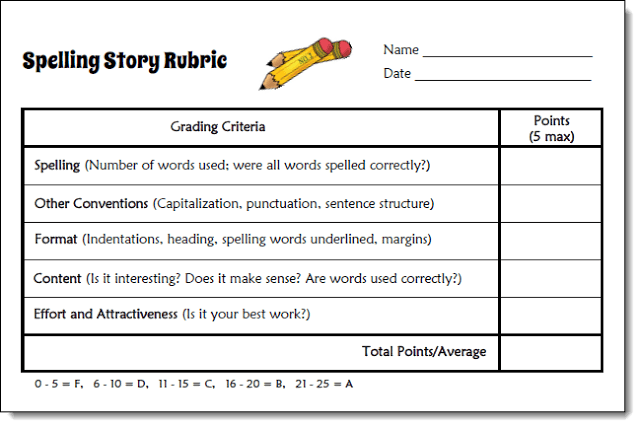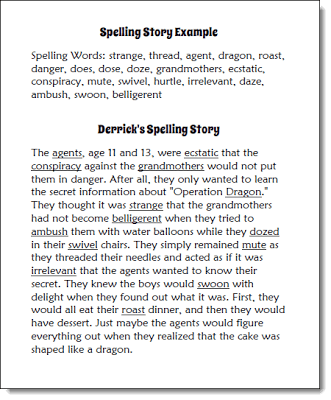Have you ever asked your students to write a story with their spelling words? It may not seem like the most original assignment, but the resulting stories are always tremendously creative!
This assignment may not sound exciting, but it’s an extremely effective way of assessing how well your students understand their spelling words… and the stories are fun to read! If you don’t believe me, just read the spelling story below that was written by Derrick, one of my former students!
Here are some practical tips to help you unleash your students’ creative talents with spelling stories.
Tips for Assigning Spelling Stories
For several weeks before you ask your students to write stories with their spelling words, have them write spelling sentences. For that assignment, I allowed them to choose 10 of their spelling words and to write a complete sentence that showed the meaning of each word. It was only after they mastered that assignment that moved on to spelling story assignments. Here are the basic directions I gave my students; feel free to modify them according to your students’s needs. I allowed them to change the form of the word slightly, such as making it plural, changing the verb tense, and so on.
Use at least 10 of your spelling words in a short creative story. The story can be silly, but it must make sense and must be more than a collection of unrelated sentences. Underline all spelling words used in the story. You may use other forms your spelling words, but be sure to spell them and use them correctly.
Creativity Unleashed
Most spelling lists include unrelated words, so students must be very creative in order to include at least 10 of them. I don’t mind if the stories are short as long as they meet the requirements. Sometimes the funniest and most creative stories are the shortest ones! I’ll bet you have at least one student who likes to take shortcuts on assignments. If your students are like mine, they will write the most hilarious stories just to get the assignment done with the fewest words possible! To see an example, click here to read Derrick’s story which is a perfect example of creativity unleashed! He used 14 words in a story that wasn’t even a full page long.
Tips for Grading Spelling Stories
Spelling stories can be tricky to grade, but if you’re going to grade them, it’s important for your students to understand your grading policy. Rubrics are perfect for grading these types of assignments because they keep you from being too subjective. You can download and use my free Spelling Story Rubric if you like it, or modify it if needed.
Each of the 5 criteria on the rubric can receive up to 5 points. After you assign the points and total them, you can use the scale at the bottom to convert that total to a letter grade. I suggest sharing the rubric with your students and their parents before they write their very first story. You might even want to write a sample story that contains errors and show your students how that story would be graded. Then display Derrick’s story example shown above and have your students help you score it with the rubric.

Tips for Sharing Stories
At some point during the writing process, be sure to provide an opportunity for students to share their stories with their classmates. If you have a class blog or website, post the stories online for everyone to read there. Morning meetings and author sharing times are great opportunities for sharing, too. Our favorite time to listen to spelling stories was Friday afternoon when everyone was packed up and we were waiting for the final bell to ring. I would call on volunteers, one at a time, to sit on my teacher stool and share their spelling stories. It was a fun way to wrap up the week and always left us laughing as we walked out the door!









